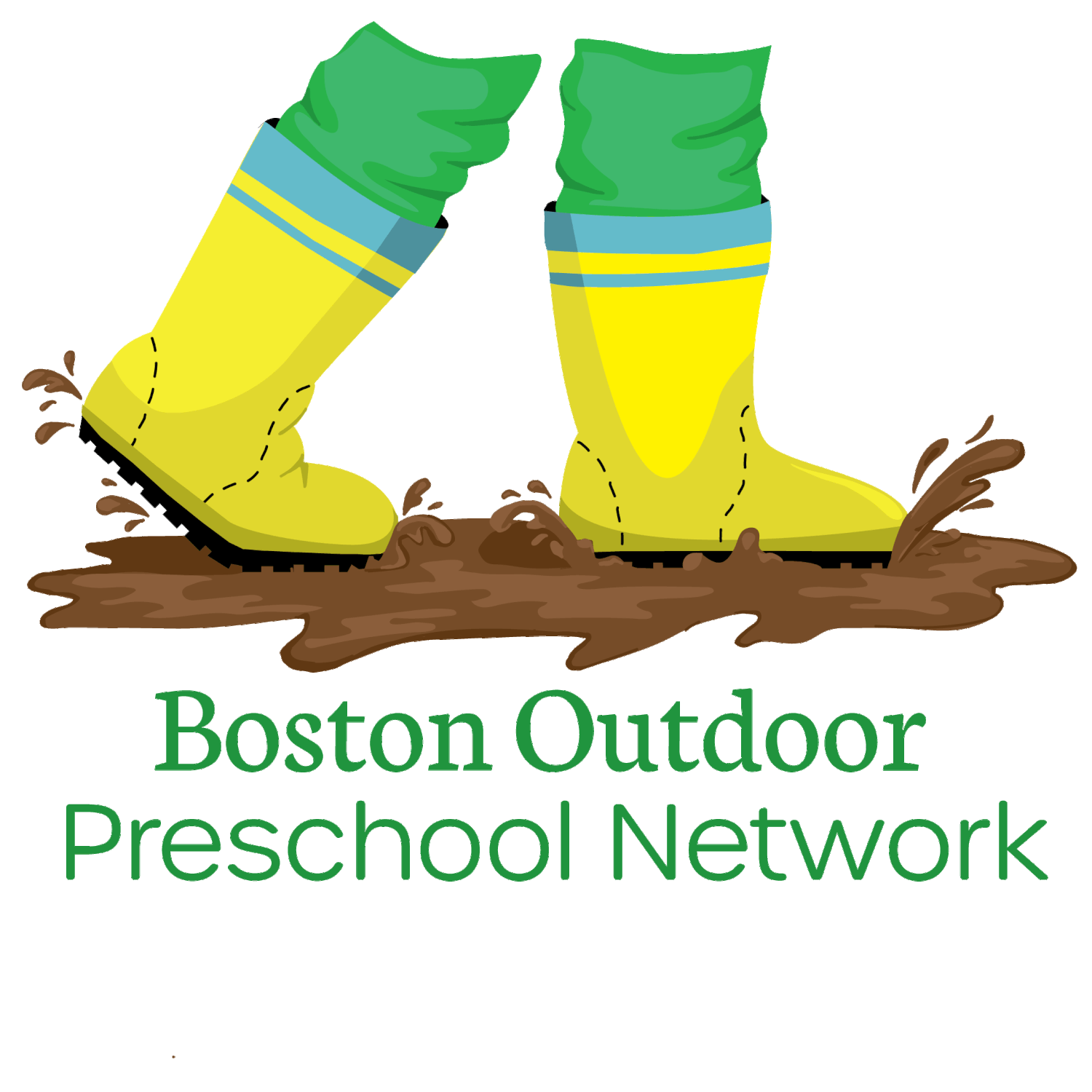Salamander Migration: Teaching In, About, and With Nature
“Play is often talked about as if it were a relief from serious learning. But for children, play is serious learning. Play is really the work of childhood.”
- Fred Rogers
By Carrie Thordarson, leader of Malden Toddler Connections, BOPN parent, and environmental educator
What does learning look like in an outdoor classroom? Stomping in puddles, muddy hands, scrambling over rocks and looking under logs is all part of a day’s play. Sometimes attributed to Jean Piaget, sometimes to Maria Montessori, and beautifully put by Fred Rogers, we know that play is “the work of the child”. It is the primary way children learn, build meaning, and make sense of the world.
UK-based outdoor educator Claire Warden writes about three types of outdoor learning: learning in nature, about nature, and learning with nature.
Learning in nature refers to activities that can equally well be either indoors or outdoors, such as reading a story.
Learning about nature is the study of ecology (which may happen in a classroom, on a screen, or outdoors).
Learning with nature is when nature itself is the teacher, with learning occurring naturally as a result of the children’s own curiosity, play, and self-directed exploration. Learning with nature is learning that stems from children’s interests and nature’s affordances.
At BOPN we incorporate all three types of outdoor learning, with a special focus on learning with nature.
Spend time in our classes and you will see children learning to cooperate, count, sort, describe, and communicate, building intellectual and social skills while immersed in nature. Other days, teachers might share information about animal behaviors or plant parts in order to instruct about a certain aspect of the natural world around us. Every day at BOPN there is time for children to pursue their own open-ended play, learning through sensory experiences with nature, guided by their own curiosity. Each of these three types of learning is supported and enhanced by the other two.
Recently, the children at our Malden location have been learning about annual amphibian migrations. The last Wednesday night of March was rainy and warm, a perfect night for frogs and salamanders to make their trek from the forest where many spend the winter to the ponds and vernal pools where they will spend the next few months mating and laying eggs. Based on this, I developed a lesson for learning about this migration.
The following day at Pine Banks Park was rainy and mild, a great day for splashing around and getting wet. Teacher Julie set out some salamanders cut out of plastic folders, which the children enjoyed gathering and moving between a stick fort and a “pond”, a large puddle the class had previously populated with stone “frogs” and “toads”. Seeing the children learning through their own play, I set my pre-planned salamander lesson to the side and watched the magic of children learning with nature. They dug in the dirt and raked the leaves, splashed in the mud and lifted rocks. They wriggled in and out of the stick fort and identified the colors and textures around them.
When the group was ready for a change of pace, we gathered together on a hill overlooking a pond and read “A Salamander’s Life” by John Himmelman, which details the annual movements and life cycle of spotted salamanders with beautiful illustrations and simple text. We looked down at the overflowing pond and puddles below and imagined that we were salamanders. What would it feel like to crawl down the rocks and cross the paved pathway to the pond? What would we need to watch out for? Some of the children decided to play the role of hazards, driving matchbox cars and trucks along the path; meanwhile other children made salamanders out of playdough and crawled them down towards the pond. Protecting the salamanders from the vrooming vehicles was a fun challenge that emphasized the vulnerability of the migration. Getting the homemade playdough fully immersed in the puddles was the children’s idea, and a delightfully slimy tactile experience. Overall, the lesson outcome was a lot of splashing and muddy sensory play as the children acted out the migration with their whole bodies. Outdoor curriculum is messy and slippery!
After wiping our hands dry we reconvened to eat snack. While the children ate, I shared some cards with lifecycle stages of salamanders, frogs and newts. For each animal, the children helped me place the stages of the lifecycle onto a poster of a pond and a forested area. We looked closely at pictures of different types of egg masses that the children might find in the coming months. We talked about cycles that repeat, and yearly migrations. And then, after snack, the children went right back to exploring and sensory play–the learning with nature that is at the heart of BOPN.
Reflecting back on my morning at Pine Banks Park, I know that unstructured play is every bit as essential to the learning process as pre-planned curriculum. As an environmental educator, I am always immersed in nature, and a big part of my job is to find balance between learning about nature and learning with nature. Often that means thinking on the fly and watching for those moments where the learning is happening independent of my lesson plan. Learning about the animals around us enhances our understanding and appreciation for the forest and its inhabitants, and the migration that happens on those warm rainy spring nights is not one we can experience directly during preschool hours. Nevertheless, I could teach about amphibian lifecycles until I am blue in the face, but it’s those slimy and mucky moments where the magic happens and the kids really get the sense of what it might be like to be that salamander crawling towards the pond.



